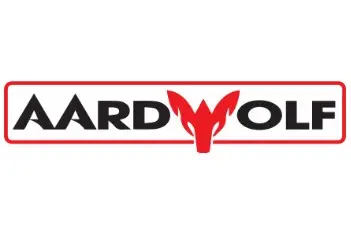
Whether you're operating a warehouse, fabrication shop, automotive plant, or construction site, the decision often comes down to three key options: jib cranes, hoists, or davit arms. In this guide, we’ll explore the differences between them and help you determine which equipment best suits your operational needs.
Understanding Jib Cranes
Jib cranes are versatile lifting solutions consisting of a pivoting arm (the jib) that supports a lifting device, such as an electric chain hoist. They are commonly used in industrial environments for handling medium-duty loads in localized work zones.
Aardwolf offers a comprehensive lineup of jib cranes designed for various applications. From compact models for small workshops to robust systems for large manufacturing floors, these cranes support modern industrial demands. To explore product categories, visit Jib Cranes Trends.
Common Types of Jib Cranes
Freestanding Jib Crane: Mounted directly into a reinforced concrete foundation, this crane offers 360° rotation and is ideal for outdoor or heavy-duty applications.
Wall Mounted Jib Crane: Attached to a vertical building column or wall, these cranes are perfect for space-constrained areas with limited floor space. View an example here: Wall-mounted Jib Cranes in Industrial Warehouse.
Ceiling Mounted Jib Crane: Installed on ceilings or overhead beams, they preserve ground space and serve well in assembly lines.
Articulating Jib Crane: With two arms connected by a joint, these cranes maneuver around obstructions and reach into tight spots. Explore Articulated Jib Cranes.
Pillar Jib Crane: Installed on structural steel columns and used in work areas requiring fixed-point lifting with 360° rotation.
Learn more about the evolution and applications of these types by visiting Industrial Cranes Future.
Comparing Jib Cranes, Hoists, and Davit Arms
1. Flexibility & Rotation Range
Jib Cranes: Offer up to 360° rotation (freestanding and pillar models), enabling seamless lifting and positioning over a large radius. Articulating versions further improve reach in congested spaces.
Hoists: Typically limited to vertical lifting. While they can be integrated into gantries or bridge cranes, they lack standalone horizontal reach.
Davit Arms: Generally offer fixed or limited-angle lifting (usually 180° or less). Best for lifting over edges or confined access points.
2. Load Capacity & Stability
Jib Cranes: Designed for medium to heavy-duty lifting—often capable of handling up to several tons. Floor-mounted types provide excellent stability, while wall or ceiling-mounted cranes suit lighter loads.
Hoists: Can be scaled to lift very heavy loads, depending on the hoist mechanism and supporting structure. Chain hoists and wire rope hoists are commonly used in high-capacity environments.
Davit Arms: Mostly used for light-duty applications. Typical load capacity ranges from 250 kg to 1,000 kg, depending on the arm's design.
3. Installation Complexity
Jib Cranes: Require structural evaluation and proper anchoring to walls, ceilings, or foundations. However, once installed, they offer long-term reliability. For proper setup, refer to this Step by Step Guide to Apply a Jib Crane.
Hoists: Installation depends on the supporting system. When mounted to bridge cranes or gantries, complexity increases. Wall-mounted or portable hoists require less work.
Davit Arms: Often portable and easier to install, particularly when lifting near ledges, tanks, or loading docks. They're suitable for mobile or temporary lifting stations.
4. Space Optimization
Jib Cranes: Wall and ceiling-mounted variants are highly space-efficient, especially in crowded facilities. Articulated models adapt well to confined or irregular work zones.
Hoists: Occupy little space but require supporting frames or overhead systems, which may intrude upon ceiling height or movement paths.
Davit Arms: Compact and highly maneuverable, but often require open clearance to lift or rotate the load freely.
5. Cost and ROI
Jib Cranes: Provide excellent ROI for facilities with consistent, repetitive lifting needs. Though installation might be more involved upfront, their durability and low maintenance costs make them ideal for long-term use.
Hoists: Economical for basic lifting operations, particularly where vertical movement is the primary requirement. However, additional costs may arise for compatible mounting systems.
Davit Arms: Best for occasional use or remote sites. Lower upfront cost, but limited in performance and durability when compared to jib cranes.
Application Examples: Jib Cranes in Action
Example 1: Metal Fabrication Shop
A Victoria-based fabrication shop installed a Wall-Mounted Jib Crane to lift steel sheets onto plasma cutting tables. The crane’s compact design preserved floor space while increasing lifting efficiency by 40%.
Example 2: Logistics Warehouse
A freestanding jib crane with 5m boom and 1-ton capacity enabled a Brisbane warehouse to streamline palletizing operations, reducing manual handling and increasing shift productivity.
Example 3: Automotive Workshop
In Melbourne, an assembly plant used an Articulated Jib Crane to install heavy engine blocks. The crane’s dual-arm motion allowed navigation around obstacles, improving safety and workflow.
Jib Crane vs. Hoist or Davit Arm: Which Should You Choose?
| Criteria | Jib Crane | Hoist | Davit Arm |
|---|---|---|---|
| Rotation | Up to 360° | Vertical only | 180° or limited |
| Load Capacity | Medium to heavy | Light to heavy (with system) | Light |
| Installation | Moderate to complex | Depends on system | Easy |
| Space Saving | Wall/ceiling models save floor space | Ceiling-mounted needed | Compact |
| Best For | Repetitive lifting in fixed zones | General vertical lifting | Edge lifting, tanks, docks |
Final Thoughts: Jib Cranes Lead the Way in Industrial Lifting
From metal shops and stone fabricators to warehouses and assembly lines, jib cranes have become the backbone of efficient material handling. Their adaptability, strength, and long service life give them an edge over hoists and davit arms in many industrial contexts.
If you're seeking a system that balances power, precision, and workplace safety, Aardwolf’s innovative range of jib cranes delivers unparalleled value. Learn more by visiting Jib Crane Comparisons and Industrial Cranes Future.
References
1. How to operate a Jib Cranes safely
3. Over brace jib crane wall mounted
5. Is a Jib Crane a Gantry Crane
6. Articulated Jib Crane Wall Mounted
8. Manual Counterbalance Crane
10. Over Braced Jib Crane Column Mounted
